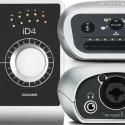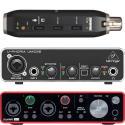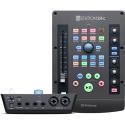What is an Audio Interface? Everything You Need to Know Here
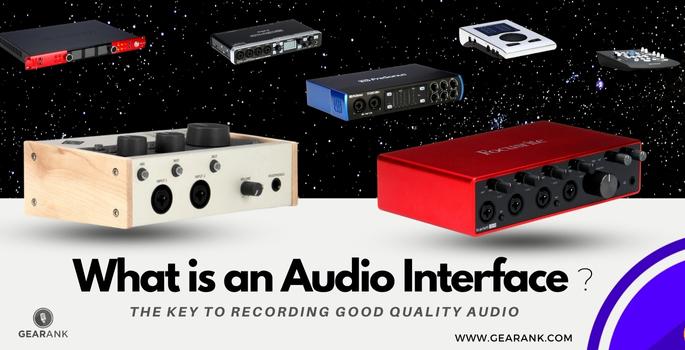
What is an audio interface is an important question to ask, as it is a key component in audio production setup.
Audio interfaces are used in many applications, from improving the quality of your productions to starting a podcast or streaming on social media platforms.
Here, we will discuss everything you need to know about the use and the features of an audio interface.
What is an Audio Interface and What it Does
An audio interface serves as a bridge between microphones, computers, speakers, instruments, and headphones. It is vital equipment for audio recording, whether podcasting, making electronic music, or recording vocals.
Say you have a voice or an instrument recording. Through the use of analog-to-digital converters (ADC), this external device translates the analog signal into digital audio.
The converted signal can then be processed in a Digital Audio Workstation (or DAW) such as Pro Tools, Ableton, or Logic. Then, it converts them from digital to analog (DAC), where the digital sound gets played back to the speakers.
Parts of an Audio Interface
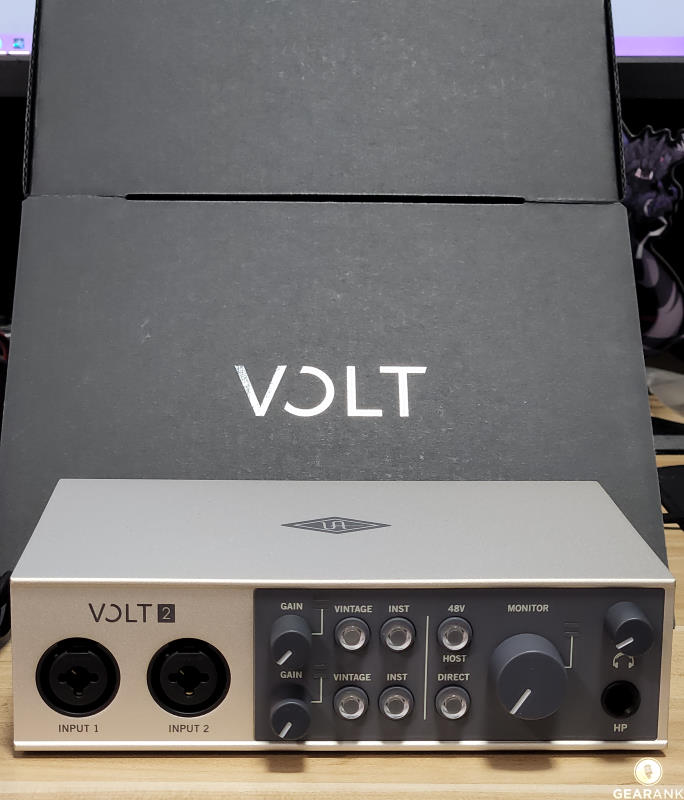
Many audio interfaces provide the following: input, output, gain control, phantom power, and monitor control.
Input: Where the microphone or your instrument is plugged in. Usually comes in a combo connector, a typical setup you'll find:

-
Mic Level Input: Use XLR cables commonly used for microphones. If you're using a condenser mic, there's an additional button called phantom power or 48v.
-
Line level input: Uses a quarter-inch cable. They are used for guitar, bass, piano, or synthesizer.
Output: Where the speakers and headphones are connected.
-
1/4-inch XLR or Line Outputs: Comes with multiple channels (left and right) where external speakers or studio monitors are connected:

-
Headphone Output: A dedicated output for headphones:

The quantity of jack and XLR inputs is important as it determines the number of audio sources you can record simultaneously.
If you are starting out or on a budget, I would advise you to look for an audio interface with two audio inputs and outputs each. Then, once you have the resources, look into an audio interface with more I/Os.
Over time, having more inputs and outputs is always better than you need. This way, you can easily record simultaneously with multiple instruments.
What Features Should Your Audio Interface Have?
An audio interface of between 2 and 16 channels contains many features you should keep in mind. As mentioned above, the number of inputs and outputs is essential. Yet, there are other factors you need to keep in mind.
Almost all audio interfaces will include the following features:
Monitoring
Your audio interface should allow you to control your monitor speakers. This will be a volume control for the output and a dial to adjust the input signal and output mix.
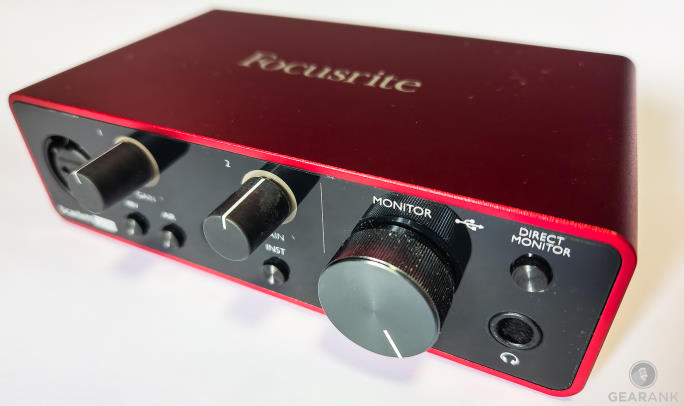
Some interfaces have single or dual headphone outputs so each musician would be able to hear themselves better. Extra monitor outputs could also be used as multiple references for mix checks.
Mic Preamps
Microphone preamps make a weak signal louder. What makes an interface sought-after is its ability to convert audio as faithfully as possible from the original sound source. Good, quality mic preamps make it easy to do just that.
These preamps come with a 48v Phantom Power switch for condenser microphones, requiring more power to function as needed. On the other hand, dynamic microphones don't need phantom power.

Latency Control
You sing but hear your voice coming in only after a few milliseconds. Audio latency is the time gap between the audio being recorded and what is played back.
To reduce this, the audio interface has a feature where you can change the time it takes to process the audio. It's called a buffer size; its typical ranges are from 32-1024 samples.
The higher the sample means you're giving the computer enough time to process the audio. Conversely, a lower sample rate means you're reducing the audio processing delays.
However, this can cause pops, dropouts, and even your recording software to malfunction.
Digital Signal Processing (DSP)
There are only a few audio interfaces that have digital signal processors. It's a feature dedicated to processing the sound without taxing your CPU.
They offload some of the processing power from the CPU and transfer it over to the DSP. Universal Audio Interfaces have signature plugins that utilize their hardware. It works well in plugin-intensive projects and prevents CPU overload from happening.
How To Connect Your Audio Interface?
Most audio interfaces connect to your computer using the ports on your device. You have the choice of using Thunderbolt or USB connectors. While you connect these two interfaces the same way, they both have different bandwidths--it's the rate at which they transfer data.
You can even setup for an ipad audio interface.
USB Audio Interfaces - Staple for podcasters, bedroom producers, and streamers. a USB audio interface is one of the most commonly used recording gear because it's capable of decent amounts of data.
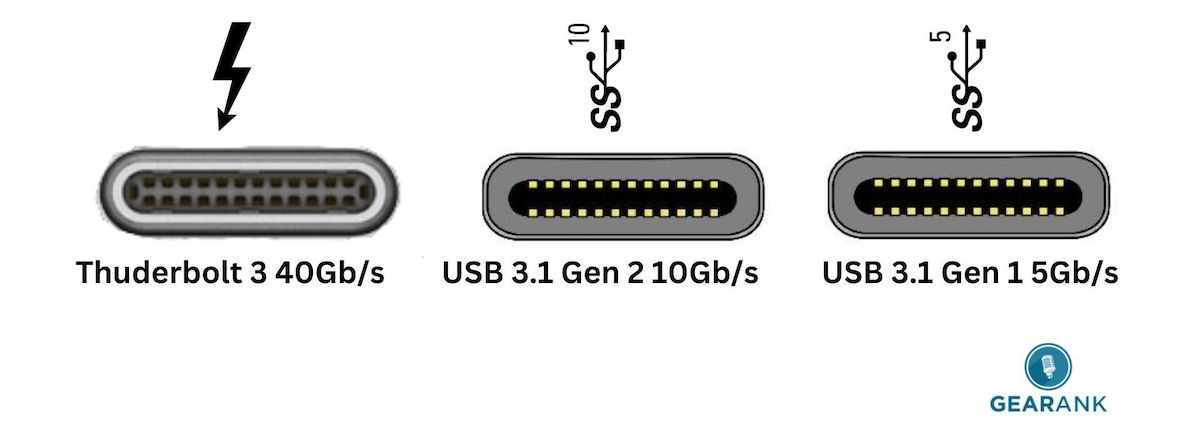
-
USB 2.0: 480Mbps
-
USB C Gen 1: 5Gbps
-
USB C Gen 2: 10Gbps
Thunderbolt Audio Interfaces - Typically used for full-scale music production, thunderbolt interfaces typically offer more input and output options. Due to their larger capacity to handle higher bandwidth and signal, these two interfaces can take latency much better. Firewire audio interfaces also allow high-speed and high-bandwidth transfer, which means improved audio quality and reliable digital signals. Note that Firewire is no longer supported by Apple.
-
Thunderbolt 2: 20Mbps
-
Thunderbolt 3: 40Mbps
Note that some audio interfaces use USB ports for connecting an external power supply.
Conclusion
Now you know the answer to the elementary question: what is an audio interface?
With the information you got here, you are better equipped to purchase the right audio interface for improving your audio production setup.
You need to think about the main features that audio interface is offering you, this includes excellent sound quality while handling all your inputs and outputs.
Frequently Asked Questions
Is There A Difference Between An Audio Interface And A Mixer?
Audio recording signals are converted from digital to analog and vice versa through an audio interface. Conversely, a mixer can control the incoming audio input while recording numerous tracks simultaneously.
Do You Need An Audio Interface?
If you're seeking to improve your music production, you need an audio interface. You will be able to record more inputs and use multiple outputs. Various options can fit a wide variety of budgets. Therefore, you can get one that suits your needs and price range.
Are The Number Of Speaker Outputs On An Audio Interface Important?
The number of outputs you have allows you to connect to the headphone output of your studio monitors. This will enable you to hear the audio that you have been recording. Yet, the more output you have, the more options you have to send the output signal to other monitors or speakers. This is ideal if more people are working on this recording.
What's the best audio interface for beginners?
I recommend getting the Focusrite 2i2 audio interface. It is a tried and tested interface that has a good track record. We've comprehensively assessed the best cheap audio interfaces on the market.
Which one is better: a USB microphone or a dedicated audio interface?
This will depend on how much control you want over the sound production.
USB Microphones have the advantage of convenient plug-and-play and ease of use.
Audio Interfaces offer the potential for expandability in terms of:
-
Control over the sound.
-
More inputs and outputs.
-
Better analog to digital conversion.
As you get better, you'll be upgrading your rig, and it's cost-effective to buy an expandable hardware interface in the first place instead of buying a new one. A USB mic doesn't have the option to swap cables, which could lead to static noise. You can swap out XLR, line, or instrument cables with an interface.
More inputs and outputs will also be more convenient in the long run. With more inputs, you can record more instruments at the same time. More outputs mean you can hook up more studio speakers to listen to the project in different references.
An audio interface will also be better for analog-to-digital conversion (ADC). Since USB mics' are meant for ease of use, their preamps and ADCs won't be as sophisticated as an audio interface.
How do I eliminate latency?
Latency happens when the computer takes some time to process the audio. Why it's taking some time depends on your system specifications, DAW, and buffer size.
System specifications
Make sure you meet the minimum system requirements for Digital Audio Workstations. 8-16GB RAM and an Intel i5 (Windows) or M1 processor (Mac). This will allow your system to process the audio with no hiccups.
DAW
Try reducing the latency by recording a track with no plugins. This will free up a lot of RAM and CPU cores, allowing your system to focus all its resources on the recording process.
Buffer size
Reduce latency by selecting a lower buffer size. Reducing the buffer size means you're telling the system to process the audio faster, and more RAM and CPU power is required.
Specific audio interfaces allow direct monitoring (also known as zero-latency monitoring). This feature gives you control over how much of the raw sound you hear compared to the sound coming out of the music software (DAW).
Contributors:
Allen Articulo - Co-writer



